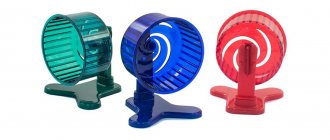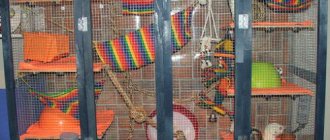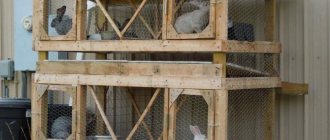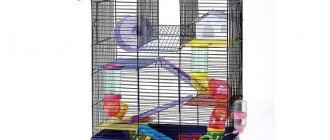When choosing a cage for your Syrian hamster, there are several factors to consider.
The most important thing when purchasing is to ensure that the cage you choose is large enough, safe and easy to clean. Unfortunately, many cages you find at the pet store do not meet all of these requirements when it comes to Syrian hamsters.
Cell type
You'll have to choose between a wire cage (usually with a plastic tray), a plastic modular cage (with lots of compartments and tubes), or an aquarium (with a secure mesh lid).
Each cage type has advantages and disadvantages in ease of cleaning, ventilation, and safety.
Easy to clean
In general, a wire cage with a plastic tray is easiest to clean. Simply remove the mesh top of the cage, clean the bedding and wipe down the wire part if necessary.
The more complex the cage, the more difficult it will be to clean, which is very important if you are considering a plastic cage with multiple compartments and tubes. These cages can be a real chore to clean.
Aquariums are not that difficult to clean, but they can be heavy and awkward to handle during cleaning.
Housing for the Djungarian hamster
These rodents are one of the cutest and most active animals. Although dwarfs are small in size, the cage for them must be very large and spacious, therefore, when existing in nature, they are able to run vast distances. For them, unlike the Syrians, houses with a large number of floors and all kinds of tunnels, labyrinths, and ladders for games are suitable. Your pet will enjoy a lot of entertainment. What you need to know when planning to buy a cage for a Djungarian hamster:
- The maximum distance between the rods is 5 mm. It is better that they are located horizontally. If there are several pets and they will breed, then the distance should be even less.
- Place a house in the cage so that the Djungarian hamster has its own cozy shelter. Provide your baby with materials to build a nest.
- Buy ceramic food bowls that will be difficult for your pet to tip over, and a drinking bowl with a nipple or nipple. Light dishes will constantly tip over, and this will make your home excessively humid.
The range of models offered by modern manufacturers is very wide. The following options are most suitable for Djungarian hamsters:
Article on the topic: How to make a hamster wheel at home
Size
The cage size for a Syrian hamster must be at least 60x30 cm and at least 30 cm in height
However, to keep your hamster active and happy, try to get a larger cage - when it comes to hamster cages, bigger is better.
Syrian hamsters require plenty of space to run and play, and the actual cage area is important for this. In general, many rodent cages are too small for Syrian hamsters.
Please note that the chambers, compartments and built-in wheels of plastic modular cages may also be small for Syrian hamsters.
Prevention and treatment of diseases
Syrian hamsters are most susceptible to:
- obesity;
- boils;
- skin diseases;
- dental problems;
- disorders in the gastrointestinal tract;
- herpes;
- infections caused by Escherichia coli;
- infestation with fleas and other external and internal parasites;
- trichomoniasis;
- eye problems, including conjunctivitis;
- false rabies, or Aujeszky's disease;
- injuries.
Disease prevention measures:
- provide the animal with sufficient space for play and activity;
- avoid stress and nervous shock;
- protect your pet from contact with other animals;
- provide the hamster with healthy sleep and proper daily routine;
- monitor the quality and freshness of water and feed;
- Clean the cage regularly;
- keep the feeder, drinking bowl, and animal house at the maximum distance from the toilet;
- do not allow the hamster to come into contact with chemicals, medications and other potentially hazardous substances;
- Monitor the animal during walks to avoid injury.
The easiest way to identify the disease is by external signs: wounds, ulcers, inflammation, accumulation of pus near the eyes and nose, bald patches or scratches, dirty or wet fur.
Drastic changes in the animal’s behavior also indicate health problems: unmotivated aggression, apathy, fearfulness. The presence of loose or too hard stools with a strong odor and unusual color indicates problems with digestion.
If these symptoms appear, the animal must be shown to a veterinarian. He will diagnose and prescribe treatment. It is not recommended to select medications for your pet on your own, as this can lead to a worsening of the condition.
Cage safety and protection
The distance between the bars in a Syrian hamster cage should be no more than 1 cm.
If the cage has horizontal bars, your hamster will enjoy climbing on them.
Check the doors of any cage to make sure they are securely closed, as hamsters can learn to open doors. Metal snap hooks, such as those on the end of a dog leash, can be attached to the door for added security against opening.
If you choose a cage with several levels, make sure that the hamster will not fall from a great height.
Useful tips
When buying a cage for such a pet, consider the recommendations below:
- The large dimensions of the base of the cage are much more important for the Syrian than the number of floors in it.
- In too small a room, the hamster becomes inactive, which increases the risk of obesity and physical inactivity. Such a rodent will not live long and will hardly reach the age of one and a half years. When kept in a spacious room, a Syrian hamster can live 2-3 years.
- If you decide to use a multi-level structure, then the optimal distance between floors should be at least 30 cm.
- The door should be wide enough so that you can easily remove your pet.
- The bottom must be plastic. The slatted bottom is not suitable for this pet - there is a high risk of injury to the paws. In addition, the plastic bottom is easy to clean.
- As for weaving the cage, for such a large animal you can use structures with a weaving frequency of 0.5-1 cm. For young animals, it is recommended to use a cage in which the distance between the rods is no more than 0.5 cm.
- Considering that hamsters constantly chew on bars to wear down their teeth, choose a design with unpainted stainless steel partitions.
- And the last piece of advice - try to keep the cage clean, do timely cleaning. Keeping it clean will keep your Syrian hamster not only attractive but also healthy.
Article on the topic: A toilet for a hamster: how to equip and train your pet, how to make it yourself
Cages for Syrian hamsters and their tendency to chew everything
Hamsters' cravings and ability to chew on anything can influence cage choice.
Wire cages have many benefits, but some hamsters are almost obsessed with chewing on the bars of the cage. If providing enough teething toys and boredom relievers does not reduce this desire, switching to a plastic cage or aquarium may be a better option.
When choosing a plastic cage, make sure that there are no exposed edges or protrusions of plastic that could cause your hamster to chew on the cage and eventually escape.
Aquariums are generally not chewable (but make sure the lid is tightly closed).
Types of cages for hamsters
There are four main types of houses depending on the material used. Each of them has both positive and negative sides, which affects the final cost. To make the right choice, you need to evaluate all the pros and cons of the product. Below are their brief characteristics:
- Metal cage for a hamster. The most popular option. Hamsters will have a very interesting time in metal cages with horizontal bars. These are perfect for Syrian rodents who will not be able to escape due to their large size. Metal models, as a rule, are very easy to disassemble, clean, and are durable. The only drawback of a metal cage is noise. If the animal stays awake in such a house at night, the owner is unlikely to be able to sleep.
- Plastic cage for a hamster. Such cages are often multi-level, equipped with tunnels and other entertainment. They look beautiful and are perfect for small hamsters, for example, Djungarian hamsters. Plastic models are durable, easy to use, and do not emit unnecessary noise. However, they also have a drawback. The plastic construction is easy to break. There are many hard-to-reach areas, which significantly complicates the cleaning process. Sometimes plastic products are overpriced.
- Aquarium. This product is perfect for keeping some types of hamsters. These aquariums are durable and transparent, made of glass or plexiglass. There must be a well-ventilated lattice lid on top. The minimum volume of an aquarium for a hamster should be 40 liters. The disadvantages of such a home include heavy weight, poor ventilation, difficulty in operation and cleaning. In addition, it is problematic to attach some accessories to them.
- Modular system. These are cages to which you can attach any elements at your discretion. This option is very good, but also expensive. Sometimes these houses don't look good. However, this is a great solution for people who plan to increase the number of their pets over time.
Article on the topic: Is it worth getting a turtle, the pros and cons of keeping land turtles and red-eared turtles at home
Which cage to buy for rodents
Manufacturers of pet products offer a wide range of housing for rodents, so you won’t have any problems with the choice. The price depends on the size, material of manufacture, number of floors, and the presence of additional accessories. many products are sold at good discounts. You can buy the product or order a hamster cage in the online store with delivery to Moscow, St. Petersburg, and other cities. Please see the table below for approximate prices for houses:
Sources:
https://homjakam.ru/zhile/kletka-dlya-sirijskogo-homyaka https://slonvkvartire.ru/homyaki/kletka-dlya-sirijskogo.html https://sovets24.ru/1230-kletka-dlya-homyaka. html
Where to put the cage in the apartment
If there are other animals in the house, in addition to the hamster, it is recommended to place the cage with the animal in such a way that the house inhabitants cannot harm the fluffy one.
When choosing a place to live, you should pay attention to several important aspects:
- absence of drafts that can cause various colds;
- absence of direct sunlight, which causes overheating of the hamster’s body and deterioration of its health;
- presence of electrical and heating appliances nearby.
The cage should be located in a fairly quiet, secluded place where strong sounds and constant sunlight will not disturb the fluffy, especially during the daytime rest. To avoid the formation of debris around the home, you can place it inside a cardboard stand about 10 cm deep.
Read more about how to name a Djungarian hamster for a girl or a boy.
How to make a cage for Djungarian hamsters with your own hands
If the purchased version of the cage is not suitable, you can try to make it yourself. However, having made such a decision, you should take into account that an ordinary jar, an old aquarium or a cardboard box will not be suitable for your future home.
Tools and materials
In the process of making a homemade cage for a dzhungarika you will need the following tools:
- marker for marking work;
- cutter for cutting holes;
- hot-melt gun with hot glue;
You should also stock up on a set of simple materials:
- food container;
- metal welded mesh, which is used when plastering facades - 4 pieces of a size equal to the sides of the container;
- plexiglass or ordinary window glass.
You will probably be interested in reading about what breed of pet hamster to choose, how long hamsters of different breeds live, and also learn how to train a hamster to respond to its name.
Step-by-step instruction
The process of making a cage for dzhungariks with your own hands is very simple and consists of several stages:
- Using a marker, mark lines on all sides of the container and lid along which the holes will be cut. The margin around the perimeter on all sides should be about 4–6 cm.
- Use a cutter to cut holes in the container along the marked line.
- Attach the metal mesh to three sides and the lid of the structure using a heat gun. In this case, the fastening of the parts is carried out from the outside of the container so that the hamster is not accidentally damaged by the edges of the mesh.
- Attach the glass to the remaining side using hot glue.
The hamster cage is ready for use. Its design features will make it easy to observe your pet through the glass, and also, due to the presence of a mesh, create a favorable atmosphere inside with constant access to fresh air.










